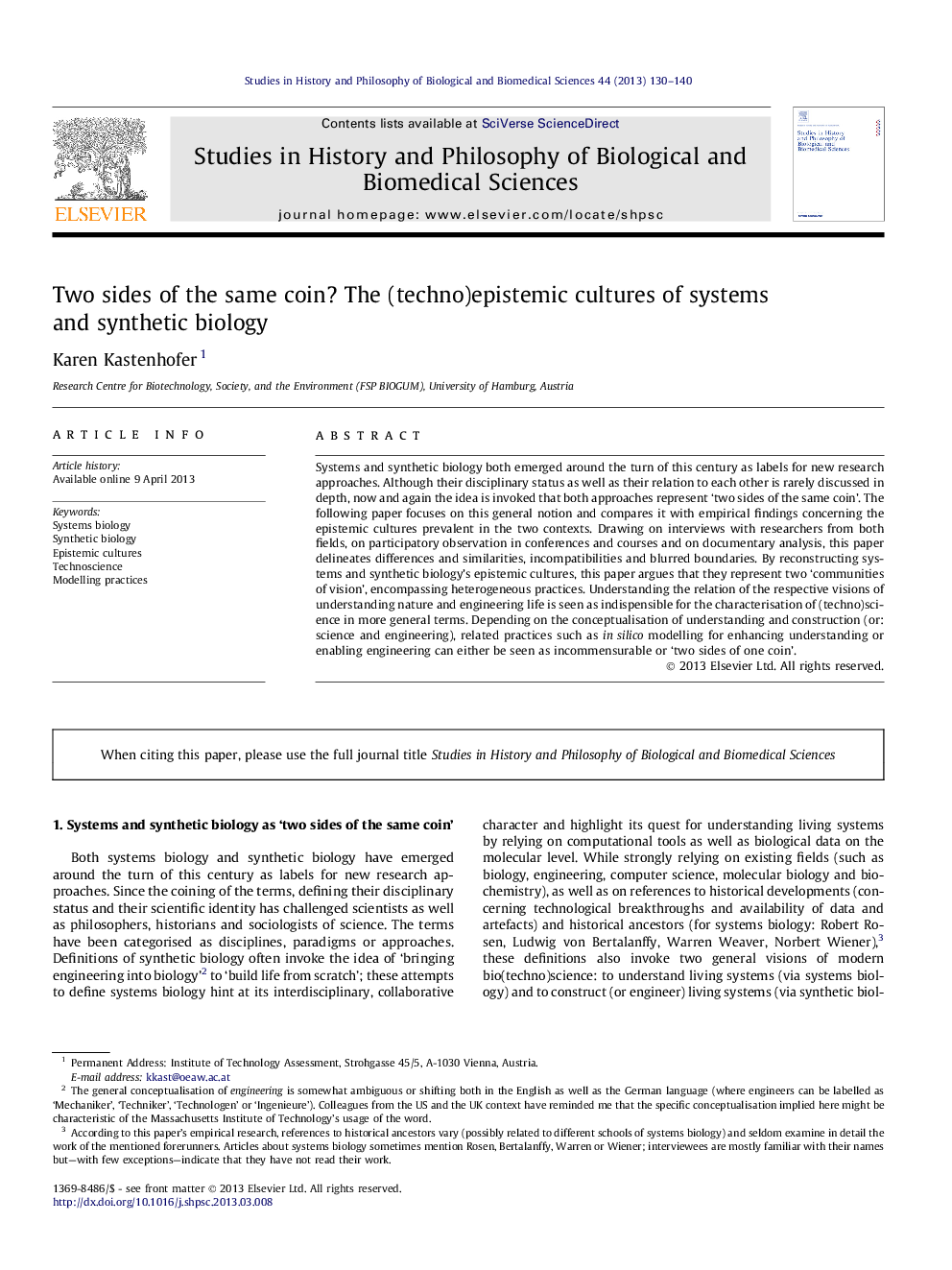| Article ID | Journal | Published Year | Pages | File Type |
|---|---|---|---|---|
| 1161910 | Studies in History and Philosophy of Science Part C: Studies in History and Philosophy of Biological and Biomedical Sciences | 2013 | 11 Pages |
•Systems and synthetic biology are often characterised as ‘two sides of the same coin’.•This general notion is compared with an empirical reconstruction of the prevalent epistemic cultures.•Accordingly, the two fields represent two ‘communities of vision’, focussing on either understanding or engineering.•In consequence, systems and synthetic biology encompass heterogeneous practices and stances that are partly incommensurable.
Systems and synthetic biology both emerged around the turn of this century as labels for new research approaches. Although their disciplinary status as well as their relation to each other is rarely discussed in depth, now and again the idea is invoked that both approaches represent ‘two sides of the same coin’. The following paper focuses on this general notion and compares it with empirical findings concerning the epistemic cultures prevalent in the two contexts. Drawing on interviews with researchers from both fields, on participatory observation in conferences and courses and on documentary analysis, this paper delineates differences and similarities, incompatibilities and blurred boundaries. By reconstructing systems and synthetic biology’s epistemic cultures, this paper argues that they represent two ‘communities of vision’, encompassing heterogeneous practices. Understanding the relation of the respective visions of understanding nature and engineering life is seen as indispensible for the characterisation of (techno)science in more general terms. Depending on the conceptualisation of understanding and construction (or: science and engineering), related practices such as in silico modelling for enhancing understanding or enabling engineering can either be seen as incommensurable or ‘two sides of one coin’.
